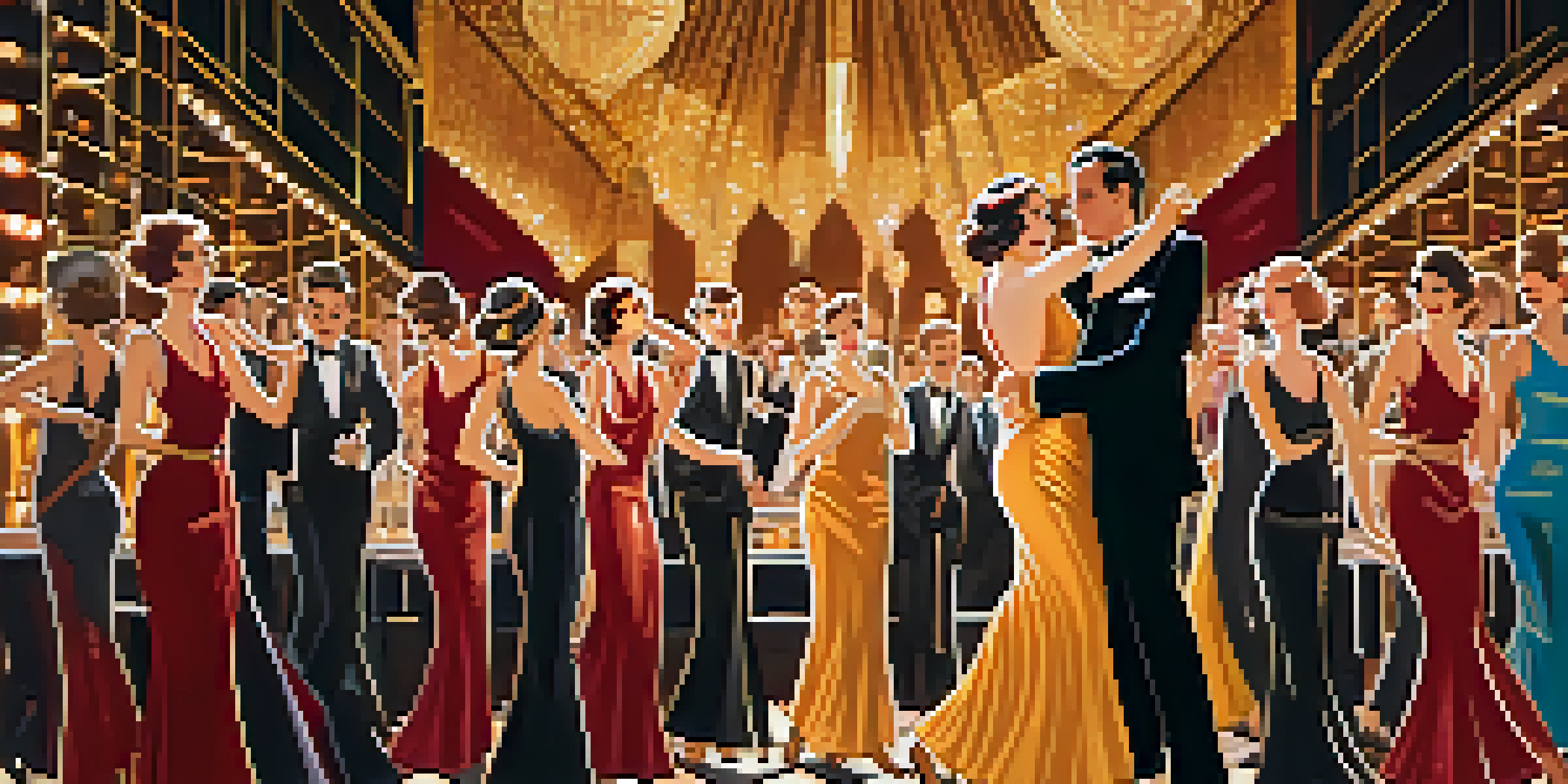The Evolution of Hollywood Fashion: Trends Through the Decades

The Roaring Twenties: Glamour and Jazz Influence
The 1920s marked a vibrant shift in Hollywood fashion, characterized by flapper dresses and jazz-inspired styles. This era embraced a sense of liberation, with women donning shorter hemlines and more relaxed silhouettes that symbolized newfound freedom. Iconic figures like Clara Bow and Louise Brooks popularized bobbed hair and cloche hats, creating a signature look that remains influential today. The glitz and glamour of Hollywood reflected the cultural changes happening outside its walls, making this decade a true fashion revolution.
The 1930s: Classic Elegance and the Golden Age
As the Great Depression set in, Hollywood fashion took a turn towards classic elegance, with a focus on sophisticated silhouettes and luxurious fabrics. Stars like Greta Garbo and Joan Crawford became style icons, showcasing tailored gowns and dramatic evening wear that captivated audiences. This decade introduced the concept of the 'movie star look,' where glamour was essential, and every outfit told a story. The use of bias cuts and intricate detailing in dresses highlighted the artistry in fashion, making the 1930s a pivotal point in Hollywood's style evolution.
Hollywood Fashion's Evolution
From flapper dresses in the 1920s to diverse styles today, Hollywood fashion has continually shifted to reflect cultural changes and societal movements.
The 1940s: War Time Styles and Practicality
The 1940s brought about a blend of practicality and style due to World War II. With fabric rationing, designers like Christian Dior shifted focus to create elegant yet functional clothing that women could wear both at home and in the workforce. The 'New Look' introduced by Dior in the late 1940s emphasized femininity with cinched waists and full skirts, which resonated with post-war optimism. Hollywood stars such as Lauren Bacall and Rita Hayworth embodied this duality, showcasing how fashion could be both beautiful and practical during challenging times.
The 1950s: Icons and the Birth of Youth Culture
The 1950s marked a significant cultural shift, with Hollywood fashion reflecting the rise of youth culture and the emergence of rock 'n' roll. Iconic figures like Marilyn Monroe and Audrey Hepburn defined this era with their unique styles—Monroe with her sultry dresses and Hepburn with her timeless elegance. The decade saw a resurgence of femininity, with full skirts, tailored jackets, and playful accessories becoming staples. This period also introduced the idea of fashion as a form of personal expression, paving the way for future trends and styles.
Iconic Figures Shaping Trends
Stars like Marilyn Monroe and Twiggy have not only defined fashion eras but also inspired generations with their unique styles and personal expressions.
The 1960s: Bold Statements and Counterculture Fashion
In the 1960s, Hollywood fashion took a bold turn with the rise of counterculture movements and the influence of pop art. Designers like André Courrèges and Mary Quant introduced daring styles, such as mini skirts and mod looks, that challenged traditional norms. Celebrities such as Twiggy and Brigitte Bardot became symbols of this era, embodying youthful rebellion and a carefree spirit. This decade was not just about clothing; it was about making statements and embracing individuality, which left a lasting impact on fashion.
The 1970s: Eclectic Styles and the Disco Era
The 1970s brought an eclectic mix of fashion influences, from bohemian styles to disco glam. Hollywood embraced vibrant colors, bold prints, and diverse silhouettes, reflecting the cultural revolutions of the time. Stars like Farrah Fawcett and John Travolta showcased the era's signature styles, including bell-bottoms and platform shoes, making them instant fashion icons. This decade celebrated freedom of expression, allowing individuals to mix and match styles, which has continued to influence fashion trends today.
Emphasis on Individuality
Since the 1990s, Hollywood fashion has increasingly celebrated diversity and self-expression, prioritizing personal style over fleeting trends.
The 1980s: Power Dressing and the Rise of Supermodels
The 1980s were defined by power dressing and a celebration of excess, with Hollywood fashion reflecting the boldness of the decade. Women embraced shoulder pads, bright colors, and statement accessories, symbolizing their growing presence in the workforce. Supermodels like Cindy Crawford and Naomi Campbell became household names, showcasing high-fashion looks that merged glamour with attitude. This era also saw the rise of designer labels, making fashion a key aspect of celebrity status and further solidifying the connection between Hollywood and high fashion.
The 1990s to Today: Diversity and Individuality in Fashion
From the 1990s onwards, Hollywood fashion has evolved to embrace diversity and individuality, reflecting a broader range of cultures and identities. Grunge styles, characterized by flannel shirts and combat boots, emerged alongside refined aesthetics seen on red carpets. Stars like Jennifer Aniston and Beyoncé have become style icons, showcasing the importance of personal style over trends. Today, fashion is more inclusive, with a focus on sustainability and self-expression, ensuring that Hollywood continues to be a dynamic force in the fashion world.